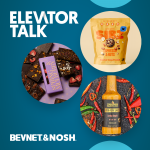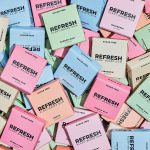FDA Enlists Public for Potential “Healthy” Label Revision
In response to shifting attitudes towards nutrition and diet, and a high-profile spat with a nutrition bar company,, the U.S. Food & Drug Administration (FDA) announced in late September that it was seeking public input for a new definition of the the “healthy” nutrient content claim for food and beverage labeling.
A September 28 statement posted on the FDA website read: “Redefining ‘healthy’ is part of an overall plan to provide consumers with information and tools to enable them to easily and quickly make food choices consistent with public health recommendations and to encourage the development of healthier foods by the industry.”
The decision to open a public dialogue on the topic reflects how “public health recommendations for various nutrients have evolved,” according to the release. It continues: “For example, healthy dietary patterns now focus on food groups, the type of fat rather than the total amount consumed and now address added sugars in the diet.”
The issue hit the public arena in April 2015, when the FDA sent a letter warning snack bar maker KIND that the company had violated labeling rules by including the word “healthy” on the packaging of four of its SKUs.
Under the FDA’s current food labeling rules, specific nutrient levels, rather than overall nutrition quality, determines if a food can be labeled “healthy.” The four KIND bars cited, for example, did not meet the definition because they contained had 1 gram or more more of saturated fat. But because the products are largely low in sugar and higher in protein than many other products, KIND took issue with the ruling.

The agency acceded to the request as long as KIND’s claims were “represented as “corporate philosophy, where it isn’t represented as a nutrient content claim, and does not appear on the same display panel as nutrient content claims or nutrition information.”
In addition to pressure from producers, the impetus to change the guidelines also arose from the U.S. government’s own new set of Dietary Guidelines, issued by the Agriculture and Health and Human Services Departments. Updated every five years, the most recent iteration — the 2015-2020 Dietary Guidelines for Americans — reflects the evolution of scientific and public understanding of certain nutrients and focuses more on eating less saturated fats, rather than a “low-fat” diet entirely.
That’s put the FDA’s own definition of “healthy” somewhat in flux: in its newest guidance document, the agency released an interim definition, as well as a temporary enforcement policy, that stated it does not intend to enforce the regulatory requirements for certain products that use “healthy” (or related terms such as “healthful,” “healthier,” or “healthfulness”) on their labeling.
To meet those new conditions:
- Foods must contain less than 3 g of fat per serving, or total fat per serving by primarily derived from monounsaturated and polyunsaturated fats.
- Foods must contain at least 10 percent of the Daily Value (DV) for vitamin A, vitamin C, calcium, iron, protein, fiber, potassium or vitamin D.
Attorney Justin Prochnow, a specialist in legal and regulatory issues in the food and beverage industries, identified products that contain saturated fats, particularly nut-based beverages and foods such as KIND, as one of the categories potentially most affected by a change in labeling rules.
“The part where companies get knocked out of the ‘healthy’ definition is usually in saturated fat,” said Prochnow.
While some companies will be forced to adjust to the new rules, those already in compliance could also be affected.
“This will most likely expand the number of products that can be called ‘healthy,’ so those who are already meet the definition will probably not like the change because it increases competition within that category,” said Prochnow.
Meanwhile, other new FDA regulations on labeling announced in July, which take effect next year, mean that more changes are likely coming. Most significantly on the beverage side, an increase in serving size for non-milk and non-juice beverages from 8 fluid oz. to 12 oz. may have a knock-on effect on products seeking to fit the “healthy” definition, said Prochnow.
“That increase in serving size could, under current regulations, take some companies out of the ‘healthy’ category,” he said. “If you were at 1.2 grams of saturated fat or under at 8 ounces, at 12 ounces you are at 1.8 grams of saturated fat — which gets declared as 2 — and you are not a ‘healthy’ beverage anymore based on the new size.”
Some coconut-based products currently outside of the “healthy” definition, such as certain SKUs of Rebel Kitchen’s organic coconut milk drinks, could be among the most affected by changes to FDA regulations. Founder Tamara Arbib told BevNET she supports the agency’s efforts to reevaluate the term, calling it “a step in the right direction.”
“I’m super optimistic about it,” Arbib said. “Any sort of narrowing of the definition of ‘healthy’ will be supported because right now it’s far too wide.”
Rebel Kitchen’s situation underscores the challenges that some better-for-you brands face when caught between strictly defined regulations and more fluid public attitudes towards nutrients. For now, the brand’s messaging positions the product as part of a holistic healthy lifestyle by emphasizing organic ingredients, non-GMO verification and no additives or preservatives.

Forecasting the results of the FDA’s public campaign is difficult, mainly because there is no indication when those might arrive. Prochnow said any revised regulation proposal, which would then be released for public comment for 60-90 days, could come “a year from now, or ten years. Right now, they are trying to decide if they should change at all.”
During the window for public comments, consumers, trade groups and industry members may submit their thoughts to the FDA.
According to Molly Spence, Director of North America for the Almond Board of California, the Almond Board “plan[s] to submit public comments that detail the peer-reviewed, published research on almonds we’ve funded for more than two decades now.”
Regardless, Prochnow said companies’ primary concern with using terms on labels and packaging remains the threat of lawsuits for false advertising rather than violating FDA guidelines. He pointed out that multiple class action suits had been filed against KIND in the wake of their “healthy” claim argument, while penalties for failure to correct FDA violations include seizure and/or injunction.
“You always want to be compliant,” said Prochnow, “but the main concern for companies isn’t the FDA — it’s what a plaintiff lawyer is going to say.”
While some critics claim that “healthy” is just another marketing term, the association can have a financial impact on a product and brand. A 2015 survey by The Nielsen company found that 41 percent of Generation Z consumers (those consumers younger than 20 years old) are willing to pay more for a healthier products. Respondents from the coveted Millennial demographic were 32 percent more likely to pay more for a healthier product.
The new definition of “healthy” may now be closer to what these consumers see as such. “When we do focus groups,” Spence said, “Most consumers call out ‘healthy fat’ as an attribute of almonds, along with other nutrients, rather than almond’s fat being a detriment.”














